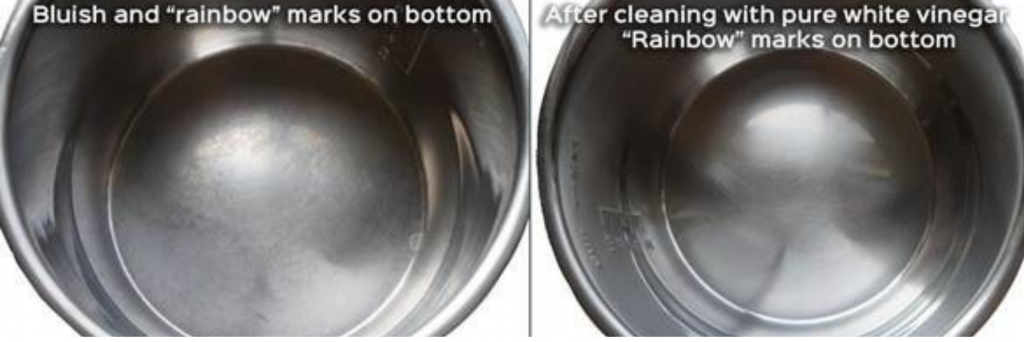
General Recommendations
- Always read the owner’s manual for your unit before operating.
- Buy extra sealing rings, as you may want to use one ring for savory foods and another for sweet foods. Strong odors from onion, garlic or spices can be difficult, if not impossible, to remove.
- Empty and wash the condensation cup after each use.
- Inspect and clean the floating valve, anti-block shield and sealing ring regularly.
- Meats tend to cook quicker with better results if cut into smaller, uniform pieces, rather than cooking one large piece.
- Set a timer once the food starts cooking. The unit has its own timer, but it is not very loud. To avoid overcooked food, set a timer if there is a specified Natural Release (NR) time.
Appliance Safety
- Tilt the lid away from yourself and others when opening the cooker at the end of the cooking time.
- Use long handled tongs or spoons to avoid burns to your arms and hands.
- Use silicone mitts or water-resistant hot pads to handle the hot and moist inner pot.
- Don’t deep fat fry in an electric pressure cooker.
- Don’t overfill the pot with food and/or liquid. There are two max fill lines on most pot liners:
- The bottom 1/2 max fill line is for rice, beans, grains, dried vegetables, and their cooking liquids.
- The upper 2/3 max fill line is for other types of food and their cooking liquids.
- Don’t cook with less than 1-cup liquid, unless foods have a high water content. Liquid is needed to produce steam and to prevent burnt food.
Food Safety
- Do not pressure can foods using an electric pressure cooker–these appliances are not designed to sustain the temperature necessary for safely preserving foods at home.
- Do not use the delay start feature. There is the potential for foods to sit at unsafe temperatures for too long, increasing the risk for foodborne illness.
- Always use a food thermometer to determine the doneness of meat, poultry and fish. Don’t guess! Check the temperature after releasing the pressure in the pot, and cook longer, if necessary, to reach the recommended minimum safe internal temperature.
How to Clean Hard Water Stains from the Inner Pot
- Add 1 cup of white vinegar to the inner pot. Allow it to rest for 5 minutes, and then pour out the vinegar and rinse.
- For “white hard water” stains anywhere else on the unit: Use a damp sponge soaked in vinegar or lemon juice.
- Avoid using steel wool as it will scratch the surface.
- Pictures (below) show: (left) Inner pot after 8-month period of regular use & (right) after cleaning with white vinegar.

Just because you CAN doesn’t mean you should!
It is NOT recommended to do the following in an electric pressure cooker:
- Cook foods meant to be crunchy or crisp–this is unless you have a broiling unit/lid or plan to broil food after it is cooked in the pressure cooker.
- Cook chicken with skin on–it comes out rubbery.
- Cook rare steaks or other meats–it is hard to monitor the doneness of meats when the lid is in place.
- Stir-fry–the high sides of the pot prevent evaporation during the sauté mode, causing foods to steam.
- Bake cakes – they come out steamed and pale. Cheesecake and moist pudding cakes can be successfully made in electric pressure cooker.
- Hard-boil eggs–these are much easier to peel when steamed or pressure cooked, but can be tricky to time perfectly in an electric pressure cooker. Experiment with your cooker and write down what works. When accounting for the time it takes to heat up the cooker, cook and release pressure, hard boiling eggs in an electric pressure cooker does not save any time over conventional boiling.
Converting Recipes for an Electric Pressure Cooker
Recipes that can be successfully converted to pressure cooking:
- Have enough liquid for the pressure cooker to operate properly
- Do not have a fried, crispy coating (pressure cooking steams foods)
- Do not call for a tender cut of meat (which pressure cooking can overcook)


